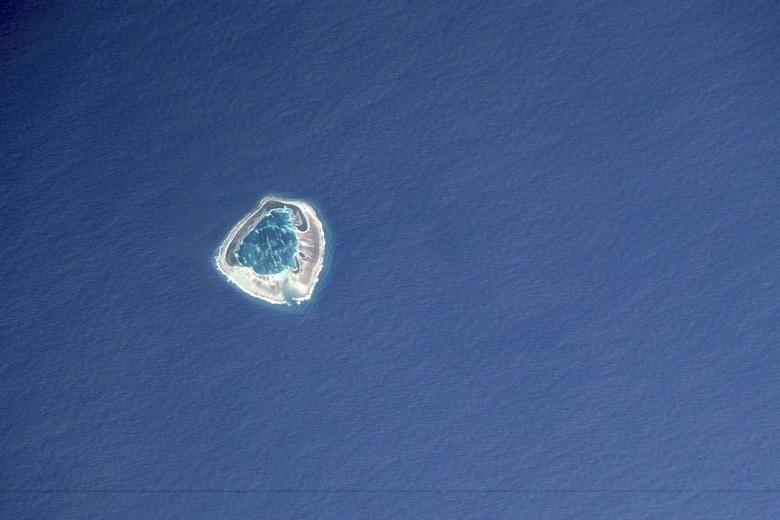Why Nemo took so long to find, and why were the discoverers frightened when found? These places are a real graveyard of spacecraft. They are sunk, which cannot be completely burned up in the atmosphere because of their size.
The most surprising fact about this conventional point in the world’s oceans is probably the very fact of its existence. It was possible to calculate the ocean pole of this inaccessibility, thanks to the calculations of engineer Hvoje Lukatele from Croatia. According to them, the point of Nemo is closer to people in orbit than on Earth. Lukatele is considered to be the discoverer of Point Nemo.
Thus, the closest distance to the orbit of the “inhabited” International Space Station is 400 km, which is almost seven times closer than to inhabited Eastern Island. So far, no human-inhabited land has been found within this radius of the planet.
The strangest and cleanest place in the world’s oceans
There is one place in the South Pacific Ocean that is exceptionally different from any other place on Earth. It is called Point Nemo.
In fact, the designation “point” is only conventional. In reality, this place represents an area of 37 million square kilometers. It is equivalent to 10% of the entire Pacific Ocean. It is located in the center of the South Pacific gyre, an extra-large system of ocean currents.
Nemo Point is also a kind of “inaccessible pole” of the ocean. Due to such remoteness, these places are a real graveyard of spacecraft. These are places where spacecraft are sunk, which cannot be completely burned up in the atmosphere because of their size.
In December 2015, the research vessel FS Sonne sailed on a 7,000-km expedition from Chile to New Zealand via SPG. Onboard were scientists from the Max Planck Institute for Marine Microbiology. Despite the fact that the study ended back in 2016, the scientists are still publishing its results. Thus, they confirmed the fact that in terms of marine biology, Point Nemo is practically a dead desert.
Several factors contribute to the lifelessness of this region—first, the vast distances to land and the great depth of the ocean. For organisms living in the water column, the familiar land and seafloor are the main sources of subsistence.
Secondly, point Nemo is isolated from the rest of the ocean by strong currents that impede the supply of the necessary substances to sustain life. Finally, the surface layer receives a large amount of ultraviolet radiation, which interferes with life.
The origin of strange sounds coming from the locations of point Nemo
It sounds unbelievable and ridiculous, but Nemo’s Point was known even before its discovery. So, Howard Lovecraft, the famous American mystic writer of the early twentieth century and author of what literary critics define as an independent subgenre of “Lovecraftian horror”, in his story “The Call of Cthulhu” (1926) as the geographical coordinates of the sunken island town where the imaginary terrible events take place, indicates the latitude and longitude, which are very close to the really existing point Nemo.
In 1997, the U.S. National Oceanic and Atmospheric Administration announced that experts had recorded mysterious sounds in the area of Point Nemo. The world media was quick to spread the scoop: as the BBC reported, the sound was even sharper than the low-frequency sounds made by blue whales.
For a long time, scientist-enthusiasts have tried to find signs of an alien civilization, mystical phenomena, or other worlds in these places. Many were sure: under the layer of clear water of Nemo’s Point, there is a terrible and sinister Kraken.
But after a more detailed investigation, NOAA came up with a rather prosaic explanation for this strange phenomenon. It turned out to be the sound of sea ice breaking and cracking, producing a powerful low-frequency sound.
What monster lives at the bottom of Nemo Point
The discovery of a previously unknown species of crab near Nemo Point in 2005 was reported by Steven Donto, an American oceanographer at the University of Rhode Island. This Kiwa Hirsuta (also known as “Yeti crab”) is a 15-cm, ten-legged crustacean that lives near hydrothermal vents in the South Pacific. The first (and so far the only) individual (male) was recovered from a depth of more than 2 km.
The media has massively wondered if other sea monsters described by Howard Lovecraft in his work could exist at the bottom of Nemo’s Point. Stephen D’Hondt does not give a definite answer, as it is unlikely, but the fact that the polar waters of this inaccessible place in the ocean could bring new discoveries to the scientific world is a fact.
